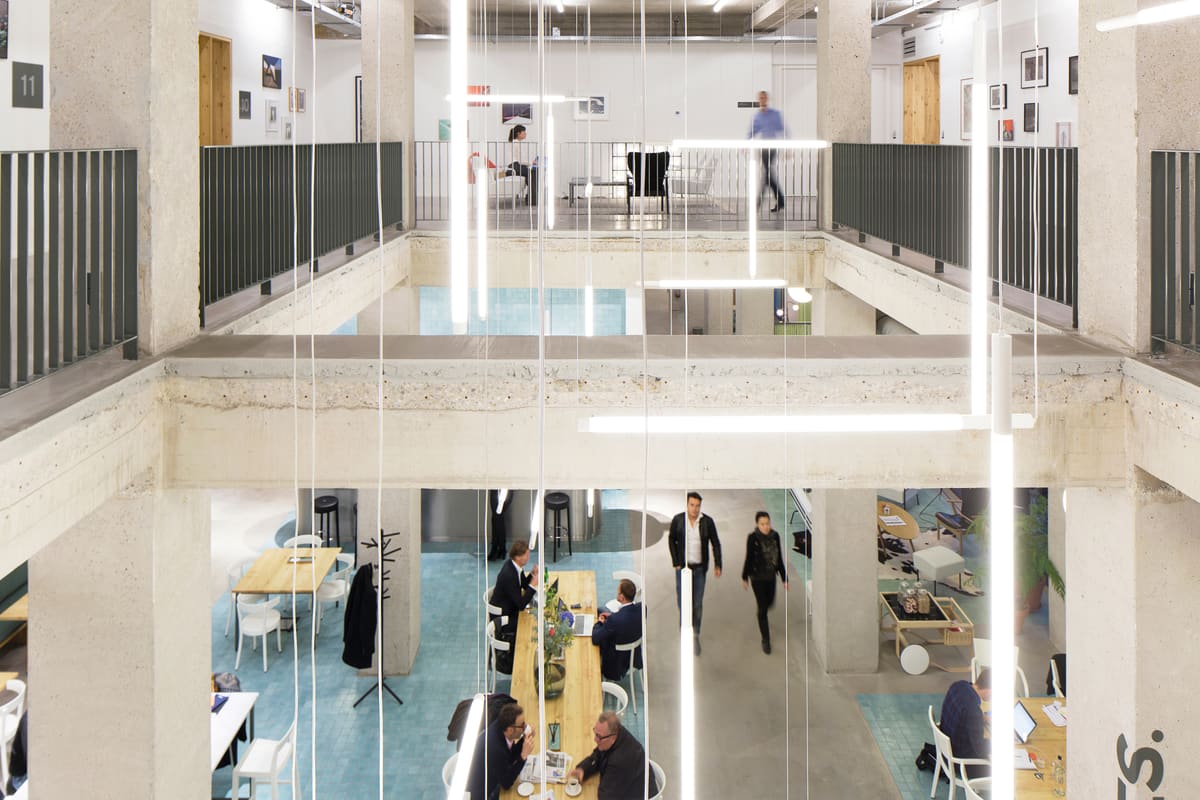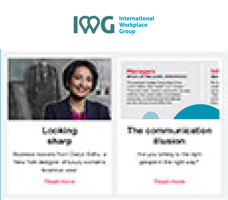As the blueprint for a new era of hybrid working emerges, we look at the pioneering employers who are moving towards a hybrid way of working.
Having experienced the viability and benefits of hybrid working during the pandemic, employers are now strategizing around a more permanent shift to a hybrid model of work. According to a recent Gartner survey, 82% of employers plan to offer staff the option of working remotely some of the time – no surprise given that 79% of workers polled agreed that remote work policies will be a factor when searching for new employment opportunities.
So what is the broader philosophy around the transformation from traditional to hybrid employer? A recent EY report details how employers should seek to integrate what it calls "bricks, bytes and behaviours" – that is, the network of spaces that supports various work activities; the technologies that virtually connect employees with office resources (and each other); and the work culture that builds trust and encourages collaboration. Innovative companies, the report suggests, are now addressing how much space they need, the purpose that space will provide, and how they will leverage activity-based working.
The hybrid pioneers
For many, the process is already well underway: Ford Motor Company recently announced that from July 2021 it will permit around 86,000 of its non-manufacturing global employees to opt for a hybrid home-and-office model – aligning with the trend pioneered by such tech companies as Microsoft, Salesforce and Twitter.
In the more traditional sector of accountancy, PwC recently announced that, as lockdown restrictions ease, it plans to make flexible working “the norm rather than the exception”; and both Standard Chartered bank and Japanese telecommunications company NTT recently signed landmark deals with IWG, allowing their employees to work partly from IWG’s global network of workspaces.
In this new landscape, everything from office geography to software and recruitment will need reviewing and reshaping. EY’s report identifies six distinct ‘resets’ for a workplace’s experience: real estate footprint, flexibility and wellbeing policies, remote work facilitated by tech, business travel and mobility, learning and culture, and workforce planning and analytics.
In reviewing these areas, the report finds that some 51% of businesses are either redesigning offices or reevaluating policies on shared spaces and meeting rooms, while as many as 74% of employers are planning moderate to extensive changes to their real estate structure – a trend mirrored in other independent studies such as those by Grant Thornton and Cisco Systems.
Beyond the binary
In a post-pandemic work environment, the key to keeping the workforce engaged with a sense of collaborative purpose is to have “a network of spaces” integrated via cloud-based, location-independent and scalable IT platforms.
Instead of there being a binary choice between the office and the home as places of work, a hybrid employer will need to offer a spectrum of workplaces and styles. These range from “work as a place”, where the office is work, but many employees work from home, to “work as an activity”, where the role of the physical office is reduced, and space is fluid and virtual.
An employer’s workspace offering (the ‘where’ of work) must also be influenced by how employee activities are segmented – the ‘how’ of work, in other words client engagement, physical resource dependencies, pathways to knowledge sharing and learning, decision-making hierarchies, data privacy and cybersecurity concerns.
EY’s proposed approach to where and when employees are located includes a mix of “prescribed rotation”, “prescribed flex”, “prescribed scheduling”, or “true flex” – the new buzzwords in recruitment circles that denote the different types of employee rostering. Facilitating all this will mean augmenting the availability of established city centre and home-based working with urban and regional flexspaces to accommodate a more fluid and mobile workforce.
One example of this trend in motion is Salesforce, whose President and Chief People Officer, Brent Hyder, recently described hybrid as not just the future of work, but “the next evolution of our culture”. Finding that 80% of its employees were “hungry for the connection, camaraderie and innovation that come from gathering in person.”
A watertight strategy
To cope with the dynamic state of this new era, a line of support has popped up in the professional consulting world. Henley Business School is offering a Strategic Workforce Planning masterclass, while EY has set up reimagined action labs that focus on the biggest challenges that participating companies face at present.
As employers redeploy the workforce and redefine the spaces their employees operate from, there’s also a legal framework evolving, which addresses such issues as wellbeing, employee safety, privacy and data protection. As Harvard Business Review recently reported, companies will also have to consider salary adjustments for workers operating largely outside of urban centres, and change employee benefits and recruitment tactics to suit workers across a wide geographical spread.
In the UK, the Chartered Institute of Personnel and Development offers a flexible working toolkit for HR professionals to help implement flexible working in their organisations, while at a legislative level the UK government has outlined statutory rules governing flexible work practices.
Aside from the logistics involved, indications so far are that those who have embraced a hybrid model are reaping the benefits. According to an article published by the World Economic Forum, which looked at how organisations are adjusting to flexwork practices, law firm Baker McKenzie said that, “generally speaking, productivity has gone up”.
IWG has been helping businesses like yours with corporate flexspace solutions for the last 30 years. Find out how we can support you today.






